I live in Minnesota and love many of the wildflowers we have here. But some of my favorites are ones we find when we head west to the Rocky Mountains.
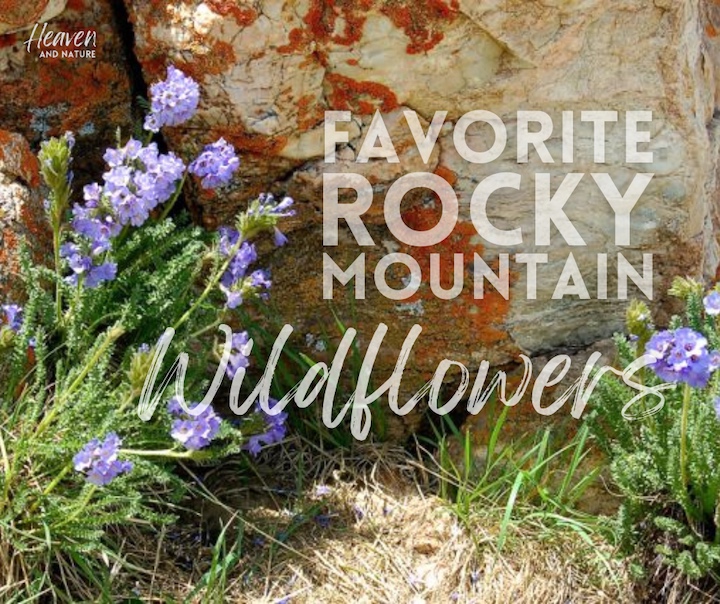
The tiny-but-tough alpine flowers are amazing. Only the privileged few who hike up into the high altitudes get to see them. They always makes me feel grateful for such an opportunity!
There are others, though, that are just as beautiful and easier to access.
Here’s a list of my favorite Rocky Mountain wildflowers we’ve seen (so far!):
1. Alpine Phlox
These look very similar to the creeping phlox we can buy at local garden centers and keep in our gardens at home. They carpet an area with their ground-hugging leaves.
The ones in this photo are white, but there’s also a a delicate lavender variety.

This photo was taken above 10,000 feet in the Snowy Range Mountains of southeast Wyoming in late June.
2. Arrowleaf Balsamroot
These cheerful yellow flowers grow prolifically in large patches in sub-alpine sunny meadows in and near the mountains all over the American west.
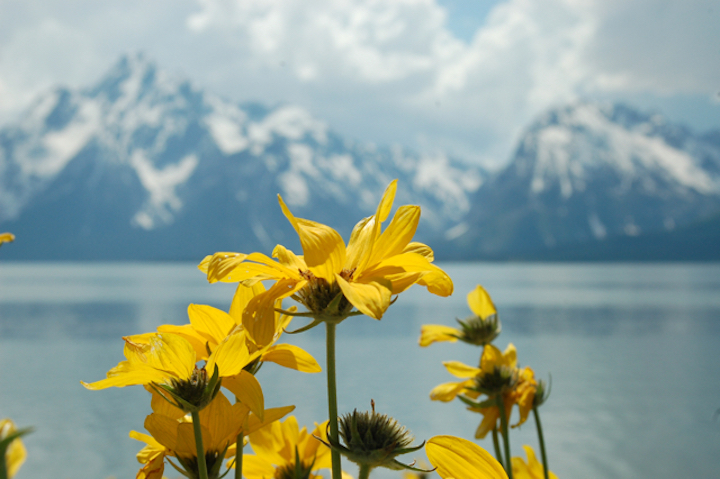
They’re quite tall, a foot or two, with blooms 2-3 inches across. They bloom in spring and early summer.
This patch was growing in Grand Teton National Park.
3. Beargrass
One of the most distinctive and striking of the Rocky Mountain wildflowers, beargrass is a tall, sun-loving beauty.
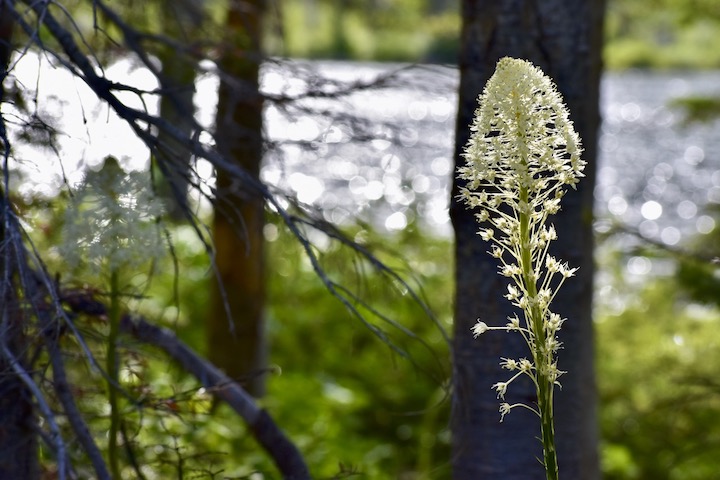
Glacier National Park is known for these—it’s so beautiful to see the mountain meadows full of them during the summer.
These were growing in the Two Medicine Campground along the road, and we saw tons of them on our hikes in the area.
4. Bitterroot
What an unfriendly name for these beautiful pink flowers! And a very misleading name, too, as the roots are edible and were historically used by the Native Americans for medicinal purposes.
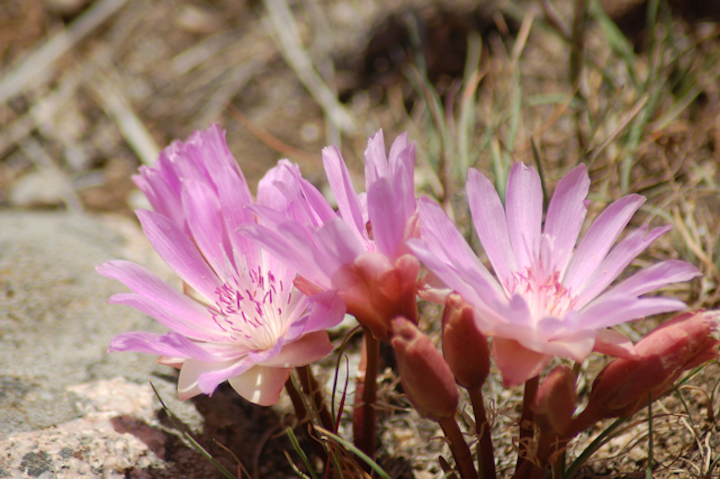
Notice the lack of green leaves—interesting! We saw these in Sinks Canyon State Park near Lander, Wyoming, a sub-alpine environment. It’s Montana’s state flower.
5. Blue Flax
Another common sight in sunny meadows all over the US, including the mountain states, blue flax is a small gorgeous blue flower atop a thin stem 18-20 inches tall. In the mountains they bloom in early-mid summer.
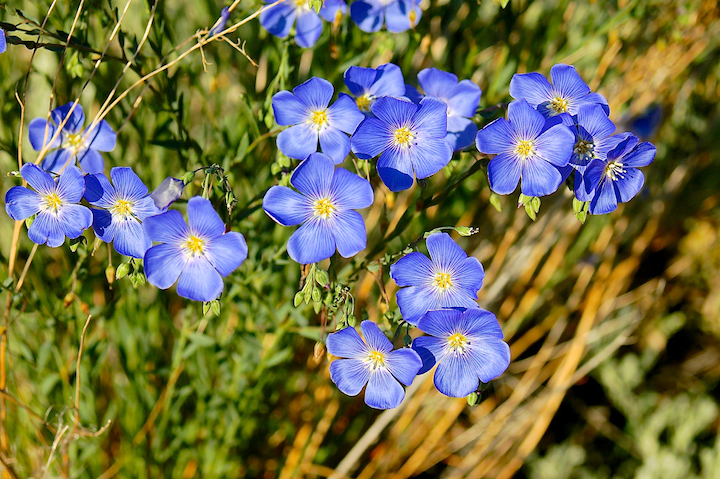
They’re very common, including in dry, sandy conditions. These were in Vedauwoo (Vee-dah-voo) Recreation Area just outside of Laramie, Wyoming.
6. Bluebell
There are several varieties of Bluebell—these were in Colorado, near Boulder. The trumpet-shaped blooms are slightly lighter than the Bluemist, listed next. Also similar to Sky Pilot, but they bloom up the stalk rather than in clusters.
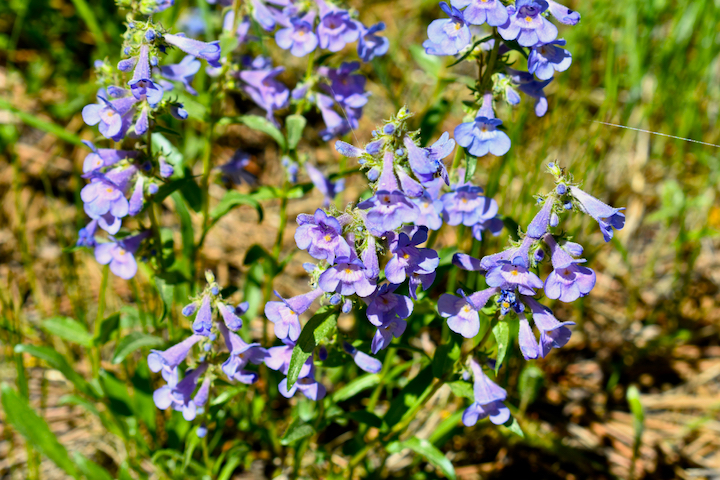
These particular ones were in the sunny open meadows of the Flatirons, surrounded by Ponderosa pine. What a beautiful sight in late May!
7. Bluemist Penstemon
These delicate blue trumpet-shaped blooms are native in Wyoming and Colorado. They grow in dry, rocky conditions on mountain slopes, in the foothills and other seemingly inhospitable areas.
What a beautiful blue color they are!
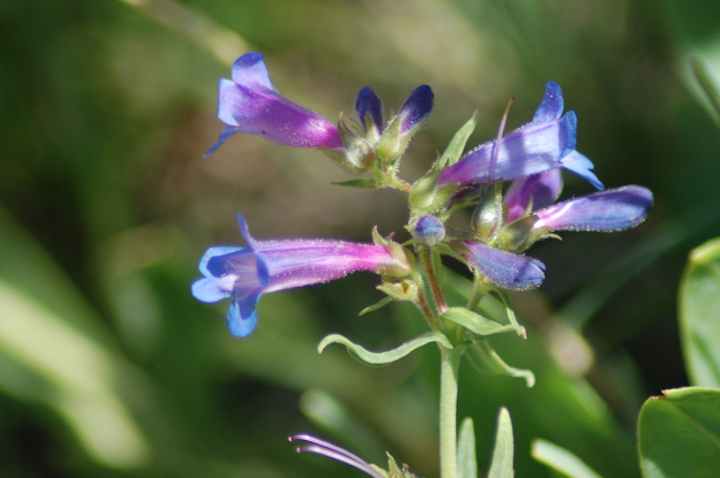
(I don’t remember where I saw this one! Somewhere out west…)
8. Glacier Lily
This is my personal favorite! Just a few inches tall, each plant has a single, delicate bright yellow flower.
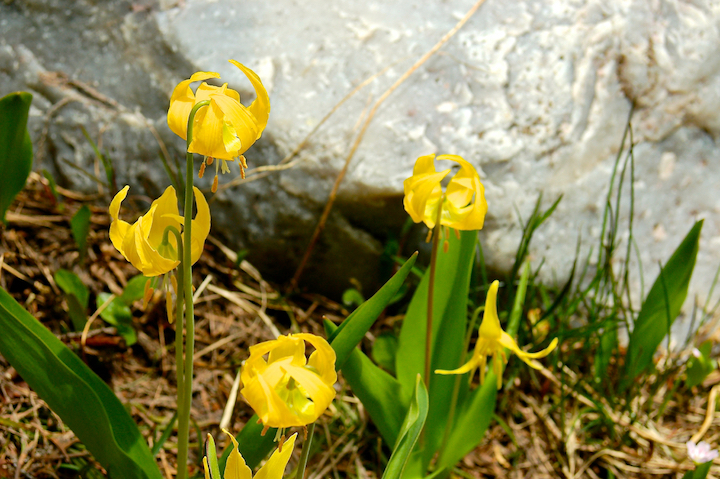
I took this photo up in the high altitudes of the Snowy Range Mountains. They were all over in this harsh rocky environment, blooming shortly after the snow melted in late June.
We also saw a meadow full of them up on Logan Pass in Glacier, also in late June.
9. Mountain Dryad
Close neighbors in proximity of the glacier lilies, these reminded me of primrose. Also ground-hugging but with lots of bold flowers that are quite large for the plant size.
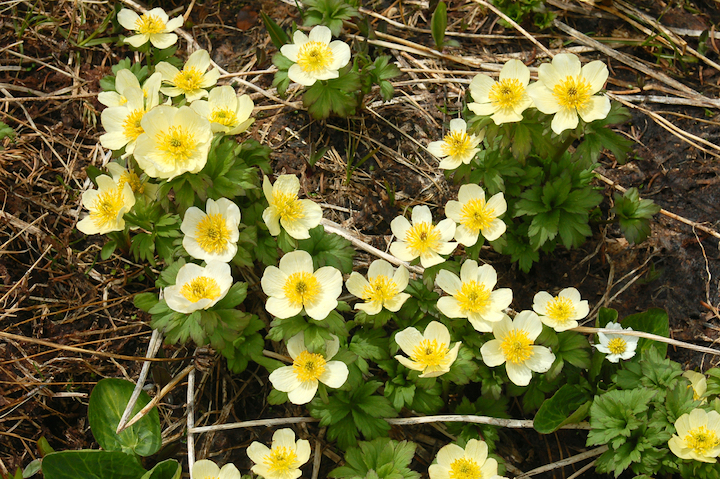
These alpine inhabitants can be white or yellow. These were also in the Snowies, blooming in their early summer.
10. Scarlet Paintbrush (Indian Paintbrush)
This bright red beauty is common in sunny meadows in subalpine terrains. They’re taller—up to 2 feet—and so eye-catching. They bloom all summer (which, in the mountains, is June through August).
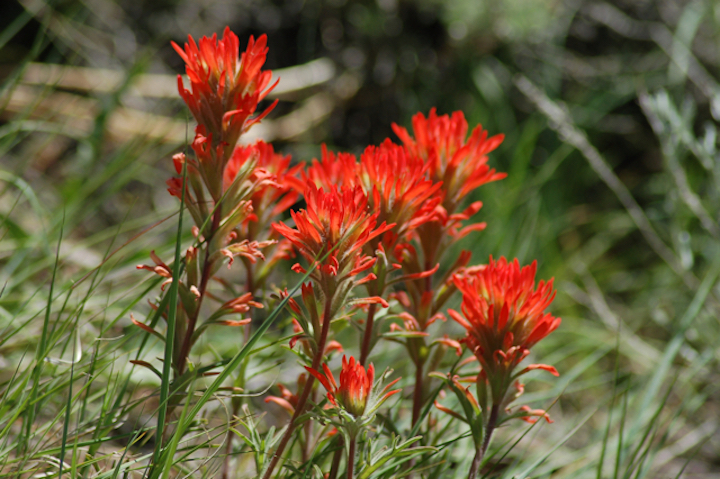
These particular paintbrushes were in Sinks Canyon State Park, in south-central Wyoming. It’s Wyoming’s state flower.
11. Shooting Star
Even though my wildflower guide says these can grow to 16 inches, the ones we saw (pictured below) were just about 8 inches tall, along a dirt mountain road at about 8,000 feet in south-central Wyoming. We almost missed them!
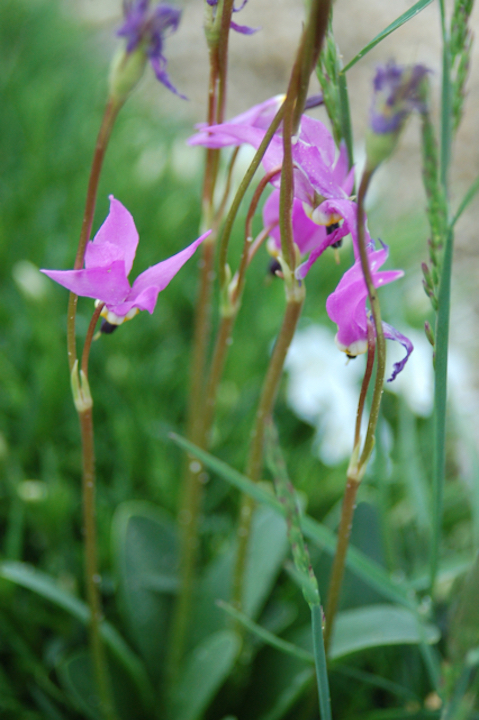
The bright pink flowers droop down in a way that reminds me of columbine.
12. Silvery Lupine
Since I love the lupine that’s naturalized along Minnesota’s North Shore so much, I was super excited to see the West’s native variety. The flower heads aren’t as densely clustered, but the leaves are unmistakable!
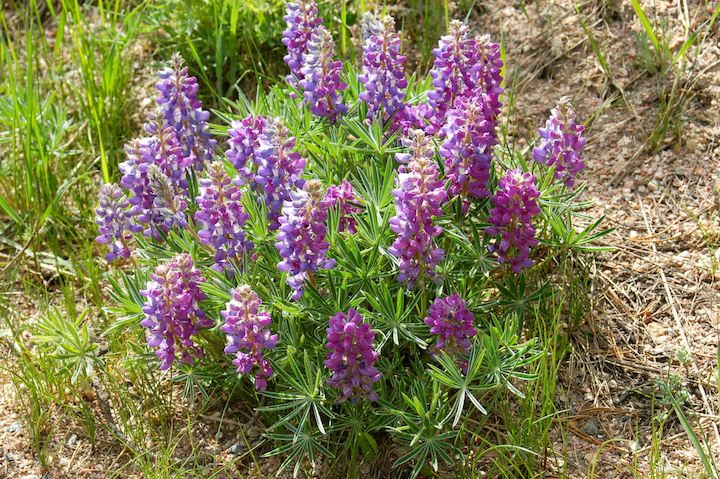
The Bighorn Mountains (where these were) seemed to have the most abundant lupine patches—at least of the places we’ve visited. Around 8,000 feet, lupine thrive in the cool summers in sunny meadows.
13. Sky Pilot
What an interesting name for a flower! You’ll find them snuggled in among rocks and just a foot tall, or so. Another trumpet-shaped flower, but this one grows them in clusters rather than all the way up the stalk.
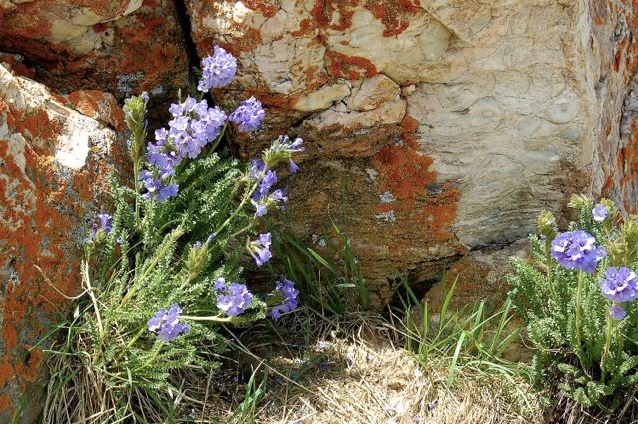
These were at 10,000+ feet in the Snowies in southeast Wyoming.
14. Wild Geranium
Another flower for the sunny subalpine foothills. The blossoms look similar to flax, but the leaves are distinctly different. The color is, of course, different too. They can grow quite tall, up to a couple of feet, and bloom throughout the summer season.

The leaves look very similar to a “tame” geranium, the kind we grow in our gardens, so my educated guess about this was correct. These were in Sinks Canyon State Park, Wyoming.
15. Wild Rose
The wild rose is probably one of the most adaptable shrubs around. In the west they’ve made their way into the subalpine areas to help decorate the open meadows with their bright pink flowers. Later in the season each flower develops into an edible rose hip, also brightly colored. Watch out for their thorny stems, though!
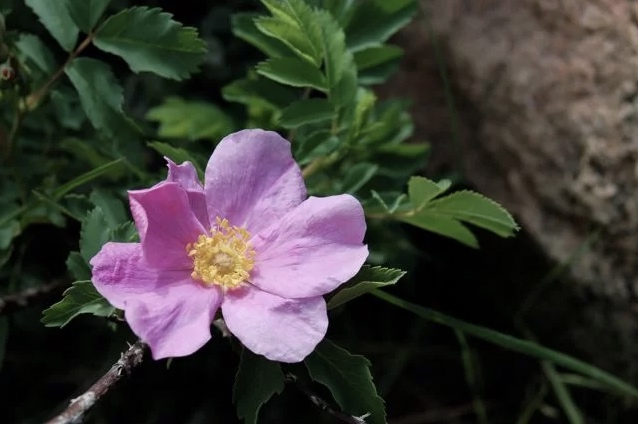
This bush was also in Sinks Canyon. These are abundant in Minnesota, but it was fun to see them in the Rockies, too!
A Lesson in the Father’s Care
It’s amazing to me that these delicate beauties flourish in such a harsh environment. Alpine and sub-alpine regions have long, hard winters. Some are extremely dry.
Jesus used the wildflowers as an illustration in His famous Sermon on the Mount:
“Which of you by being anxious, can add one moment to his lifespan? Why are you anxious about clothing?
“Consider the lilies of the field, how they grow. They don’t toil, neither do they spin, yet I tell you that even Solomon in all his glory was not dressed like one of these.
“But if God so clothes the grass of the field, which today exists and tomorrow is thrown into the oven, won’t He much more clothe you, you of little faith?” (Matthew 6:27-30, World English Bible, public domain)
Jesus used the wildflowers as a reminder of the Father’s care for His children. When you encounter these bright splashes of color on your hikes, backpacking trips or camping trips let them remind you of that, too.
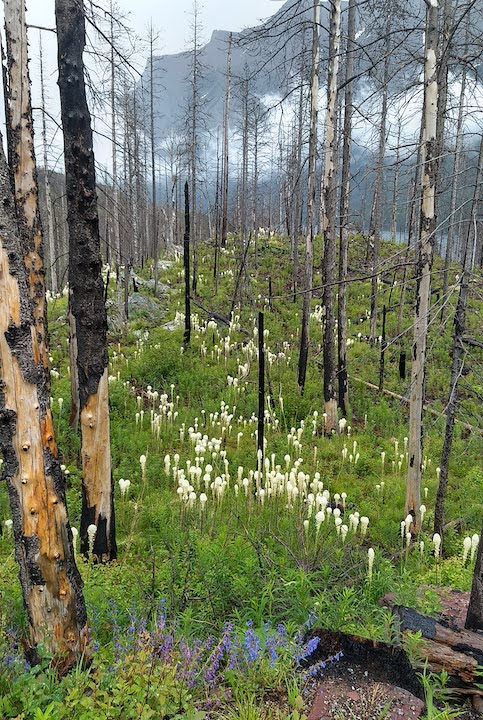
(SOURCES: Jamie Simonson from wyo.gov…thanks, Jamie! • wildflower.org • Colorado Wildflowers • Rocky Mountain Wildflowers Pocket Guide by David Dahms (©1999 David Dahms and published by Paragon Press) (Listed on Amazon for an atrocious price…I found it at the Ranger Station in the Snowy Mountains for $6.95.)
Here’s more…
- How to Raise Our Girls to Love the Outdoors
- As Christians, How Do We Steward Our Environment Well?
- The Best Wyoming Mountain Range You’ve Never Heard Of
- 11 Wonderful Things in Our Natural World - February 6, 2025
- What Kind of Exercise Is Best? - January 10, 2025
- 116 Verses in the Bible that Talk About Light - December 10, 2024
